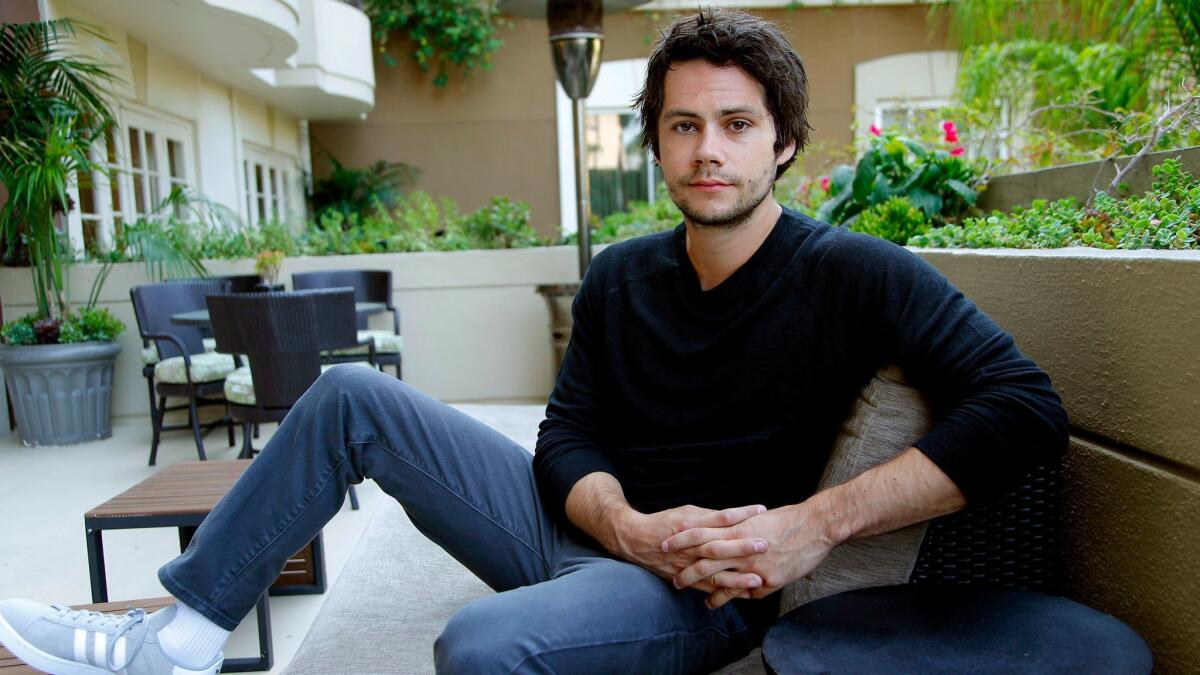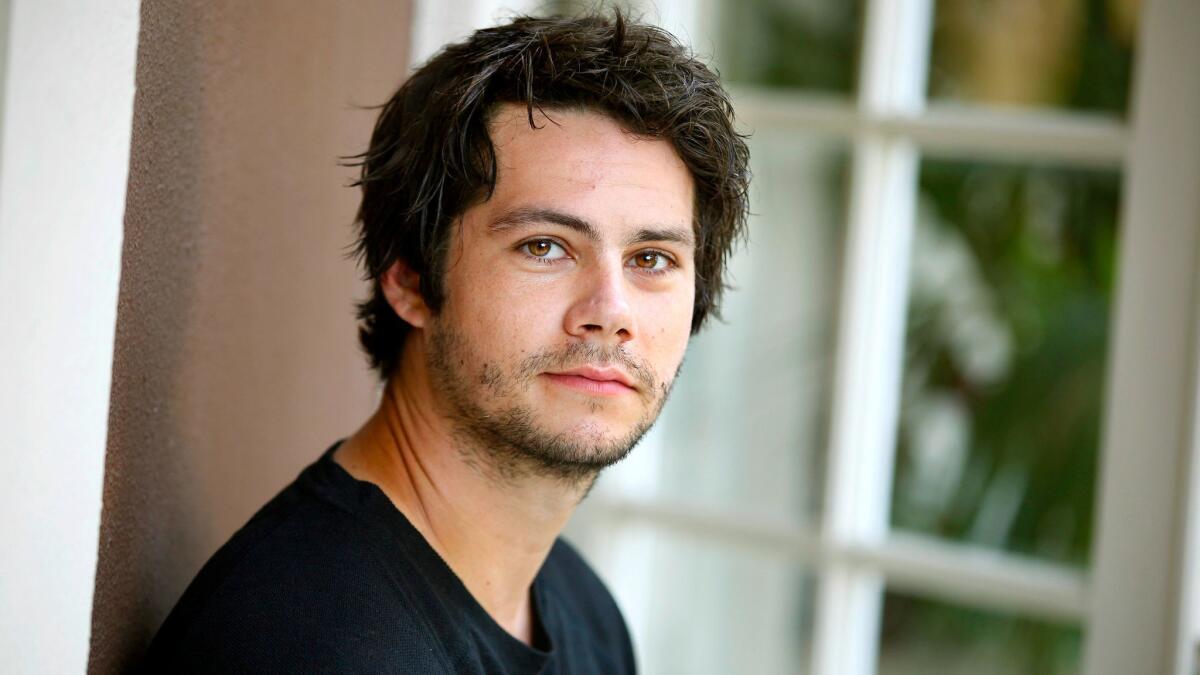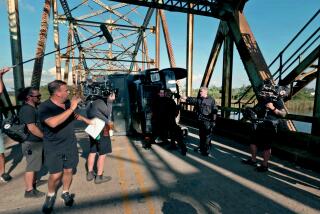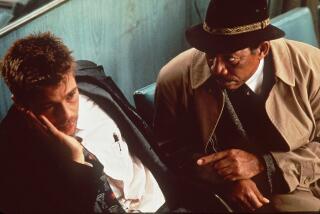Back from the brink, āAmerican Assassināsā Dylan OāBrien is ready to prove heās an action hero

For the past year, Dylan OāBrien has been in hiding. He spent most of his time inside his home in Sherman Oaks, wondering if heād ever be the same person he was before the accident. Not just emotionally, but physically too: After major reconstructive surgery that left him with four metal plates holding one side of his face together, he feared heād never look the same again.
āItās a miracle, what theyāve done,ā OāBrien says, placing his hand on his cheek. Indeed, the actorās team of doctors must have done some incredible work, given the fact that he looks almost exactly as he always has ā the boyish teen heartthrob who has amassed an army of young female fans since he began working on MTVās āTeen Wolfā at age 18.
Of course, heās 26 now, so heās filled out a bit, and thereās also a hint of patchy scruff on his face. He had enough gravitas to him that the producers of āAmerican Assassin,ā which opens nationwide Friday, felt confident casting him as the grizzled action-hero Mitch Rapp ā even though the character in Vince Flynnās bestselling books was widely believed by readers to be in his 40s.

Dylan OāBrien and Michael Keaton in the trailer for the thriller āAmerican Assassin.ā
āAmerican Assassinā is the reason OāBrien emerged from his self-imposed exile. Heād signed onto the film just a few weeks before he began work on āMaze Runner: The Death Cure,ā the third and final installment in 20th Century Foxās post-apocalyptic young-adult franchise. He was hoping āAssassinā would mark the beginning of a new period in his career. In 2017, after six seasons, āTeen Wolfā would come to an end, as would the āMaze Runnerā series.
āIāve never looked at myself as this pop candy type,ā OāBrien says, peppering his speech with more colorful language. āI felt like I was more real than that, so I would get mad when someone would say [I was a teen heartthrob]. Iād be like, āIām 19! Iām a stoner!ā I really resented that.ā
He was so excited to begin work on āAssassinā that he fielded calls from director Michael Cuesta just as production began in Vancouver, Canada, on the final āMaze Runnerā film. Together, they discussed how OāBrien would approach the character, a 23-year-old who is recruited by the CIA to hunt down terrorists after he witnesses his girlfriendās murder at the hands of Muslim radicals.
āI spoke with him on a Saturday when he had just started āMaze Runner,ā addressing his notes and concerns about the character,ā Cuesta recalls. āHe was really excited and seemed like, āYeah, Iām ready to do this.ā I was like, āPace yourself, dude. Take it slow. Weāll talk when youāre off this project.ā That was Saturday, and on Wednesday, I got a text from my agent telling me that this awful thing had happened to him.ā
On the third day of production in Canada, OāBrien was performing a stunt that required him to be harnessed to the top of a moving vehicle; reports claim he was accidentally pulled off that vehicle midstunt and hit by another vehicle. As a result, he suffered āa concussion, facial fracture and lacerations,ā according to a report from WorkSafeBC.
Fox put production on hold in March 2016, and OāBrien ultimately returned to set a year later ā after heād shot āAssassin.ā āDeath Cure,ā which was originally scheduled to open in February of this year, is now set for release Jan. 26, 2018.
āI didnāt really wake up or become cognizant, in a way, for a good six-to-eight weeks after it happened,ā OāBrien explains. āAnd then I entered a really difficult phase. I just wasnāt the same person. Things happen to you after something like that that you just donāt have any control of. Your body is designed to react in a way to protect itself if you have a severe trauma to your brain.ā
The actor is sitting at a hotel bar in late August, publicly discussing his accident for the first time. Heās been anticipating this day for months. He knew how it would go, meeting reporters at the Four Seasons in Beverly Hills, where heās done press a handful of times before. Even though he was supposed to be talking about āAmerican Assassin,ā heād also have to talk about what had happened to him.
āI hid for a long time, obviously. I was going through a lot and didnāt want anybody to see me going through that, I guess,ā he explains. āBut Iāve gotten to an OK place of talking about it all. Iāve had to come to terms with people asking me about what happened.ā
In a way, he admits, he regrets being so private about what happened to him, given the rash of recent on-set stunt-related injuries and deaths. Last month, stuntwoman Joi Harris was killed while riding a motorcycle on the set of āDeadpool 2.ā In July, a stuntman on AMCās āThe Walking Deadā died after falling and suffering massive head injuries. And actors have been harmed too: Tom Cruise broke his ankle while attempting a jump from one building to another on the set of āMission: Impossible 6,ā and filming had to be halted in August. And on the sets of two different comedies this summer, Rebel Wilson suffered a concussion and Ike Barinholtz fell from a high platform, fracturing two cervical vertebrae in his neck.
āItās really disappointing, and I think things like that should really wake the industry up,ā says OāBrien. āItās really easy, sometimes, to get comfortable on a set and get into the groove and think itās all make-believe so nothing bad can happen. As an actor, you blindly put your trust in experts ā and if they tell you somethingās safe, you donāt fully vet it yourself. If youāre young and inexperienced, thatās just what youāre taught to do.ā
While he never felt like a āgun was to [his] head,ā OāBrien admits he always felt responsible for performing his own stunts. Heād get upset any time he had to be replaced by a stuntman. When heād watch one of the first two āMaze Runnerā films and catch a shot of his double, he was irritated.
āIt bugs you,ā he explains. āYou see it and youāre like, āUgh, what the [heck]? How do people not notice thatās not me?āā
But if he knew if he was going to move forward with āAmerican Assassin,ā heād have to approach his action sequences with far more caution than he ever had before. Once he decided to stay with the project ā and CBS Films, the production company behind the movie, agreed to wait for him to fully recover ā he began working extensively with action coordinator Roger Yuan to ready himself for the movieās hand-to-hand combat scenes.

Not surprisingly, OāBrien says, there were strict parameters set in place by the filmās insurance company that dictated just how much he could do himself in the wake of his accident. But he was still eager to do the fight scenes himself, so he rehearsed them extensively ā to the point, he says, where he literally could do the choreography blindfolded.
āYou just want to know it to that extent so that everybody knows what theyāre doing on that day,ā he says. āAnd then when you get to that day and somebody says, āWait, can we just change this?ā You say āNo.ā Things like that, youāve gotta stand up for. Iāve understood more of where my voice can exist. When I was younger, I used to just want to please everybody and not want to be an issue or not be considered a diva. Iāve just grown up and realized you have to look out for yourself and stick up for yourself and thereās nothing wrong with that.ā
Other protections were built into the production to make OāBrien feel more at ease too: His father, a veteran below-the-line staffer, was hired as a camera operator so he could be there if needed for his son. And āon the days we were putting Dylan in a situation that might make him uncomfortable, we took longer than we might normally take because we didnāt want to rush it,ā says producer Lorenzo di Bonaventura. āWe were acutely conscious of not putting him in a situation where he could have an adverse reaction ā a stunt that might rekindle something.ā
OāBrien had also spent time readying himself mentally for the return to set even before production began, visiting with a therapist two times a week. It was there that he realized the similarities he now shared with Mitch Rapp, a character struggling to contain his anger in the wake of a serious trauma.
āIt felt like this version of me at the time, always trying to hide from people,ā he says. āI was in a really dark place. Obviously, I didnāt experience what he goes through, but that summer when I was in recovery, I was going through a lot. Funny enough, I felt so deeply connected to the dude, and I donāt think I would have known how to play him if this hadnāt happened.ā
Meanwhile, it remains to be seen whether āAmerican Assassinā will be the role to catapult OāBrien into adult leading-man territory. His young female fans are still ravenous, anyway: On set in Rome, they once became so intense that the actor was forced to move to a different hotel.
āI saw some fans outside afterward, and three of their moms gave me the finger,ā says Cuesta with a laugh. āThey hated me because I was keeping Dylan from them.ā
The producers of āAssassinā are hoping the film does well enough at the box office this weekend to launch a new action franchise. OāBrien knew that was a possibility, and says heād be happy to play Mitch Rapp again. But heās also looking forward to doing something smaller ā āfinding the new generation of filmmakers and taking risks on guys who donāt have a 25-year rĆ©sumĆ©.ā The idea of acting in a Marvel superhero film, he says, makes him shudder.
āIt just seems like too much,ā he says. āI donāt think Iām a person who could handle being that face, that star who has to be on every talk show every year. It gives you a lot of flexibility and freedom in things that you do want to do, but it also takes a lot of your time away. And just artistically, it must be hard to keep suiting up and be the same character again over and over all year long in a bunch of different movies. I would like to have a lower profile and career, in a way, but still do things that mean something to me.ā
Heās proud of his work in āAssassin,ā he says, but he almost doesnāt look at it as a movie.
āIt was everything but, in a way,ā he acknowledges. āLook, I was angry for a long time. But at this point, thatās not going to do anything. I have to process what happened and move beyond it, and I have. It was the worst thing that ever happened to me, but itās provided me with a lot of growth and insight that I wouldnāt have had otherwise.ā
Follow me on Twitter @AmyKinLA
More to Read
Only good movies
Get the Indie Focus newsletter, Mark Olsen's weekly guide to the world of cinema.
You may occasionally receive promotional content from the Los Angeles Times.











